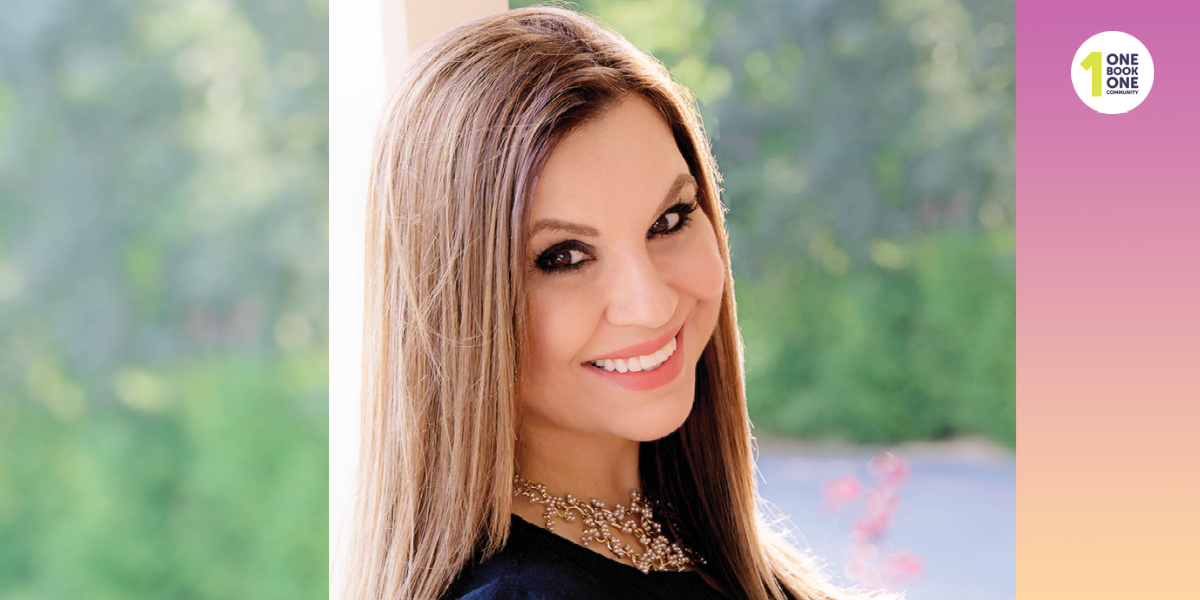|
Jasmin Darznik is the New York Times bestselling author of three books, including The Bohemians, a novel that imagines the friendship between photographer Dorothea Lange and her Chinese American assistant in 1920s San Francisco. The Bohemians is this year's One Book, One Community selection. We had a chance to ask her a few questions:
You were born in Tehran and came to the U.S. as a small child. Lange was born on the East Coast and moved to San Francisco as a young woman. Are there elements of Dorothea’s story that you recognized in your own experience? Having grown up in an immigrant family, I could well imagine the disorientation Lange must have felt when she was marooned in San Francisco in 1918. My telling of how she was robbed soon after she arrived in the city is true to the facts of her life, as is the larger narrative about how she fashioned a new life and a new self for herself once she came to California. I’m fascinated by how such accidents of history and circumstance shape us. Particularly for artists and writers these ruptures can change the course of one’s life. I really don't know if I would have become a writer if I hadn’t experienced immigration. It’s fundamental to how I see the world, a source of confusion and pain, but also of creativity. There is an interesting parallel between the way people accept photography as objectively true and the way people internalize historical fiction. How would you say the concept of “truth” relates to both photography and historical fiction writing? A photograph, no matter how seemingly documentary, is always also a reflection of the person who takes it. Historical fiction works in much the same way. What I see when I look back to the 1920s may differ quite radically from how others see it. When I looked at Dorothea Lange’s life my eye was drawn to the period of time when she was still finding herself. I was also intrigued by the mention of her Chinese American assistant. It occupies just a few paragraphs in her biography, but that relationship made me see not only Lange but her times in a different way. And yet there is a veracity to the tale, just as there is a veracity to a photograph. It's a version of her story that’s consonant with the known parts of her story. It's just that it draws on imagination to make it come alive. Though this book is set more than 100 years ago, readers won’t have to work hard to find similarities to today. What wisdom or learning from the book do you hope readers might find useful in their own lives? The idea of who is or can become American was hotly contested in the 1920s. That was a time of massive immigration, and it spurred white nationalist movements and anti-immigrant legislation. A hundred years later the fault lines of American history fall along those same lines. Racism and sexism are as much a part of our world as they were of Lange's. One thing that has changed is that we now have storytellers who're bringing unseen stories into the frame. That's definitely what most excites me as a novelist — that power to make the hidden parts of our history more visible. What’s next? I'm working on a novel set in Old Hollywood. It's about an actress, so it has me exploring new worlds. Like the world of The Bohemians, there's glitter and glitz, but also a story of a woman coming into her own. Lots of work to go on it, but I'm enjoying the research and writing tremendously. Meet Jasmin at the One Book grand finale author event on February 26 at Stevenson High School auditorium or on Zoom. Check out and read a copy of The Bohemians between now and then, and attend related book discussions, lectures, and performances at any participating library. Learn more at 1book.org.
0 Comments
Leave a Reply. |
Recent Posts
|
HoursThe building and drive-up window are open.
Mon–Thurs 9 AM–9 PM Fri–Sat 9 AM–5 PM Sunday 10 AM–5 PM 'Mask Required' access available before opening hours, daily. Learn more. Holidays and other closed dates |
Stay InformedSign up to receive email updates from the library, including news and notice of upcoming programs.
|
Quick LinksContact |





